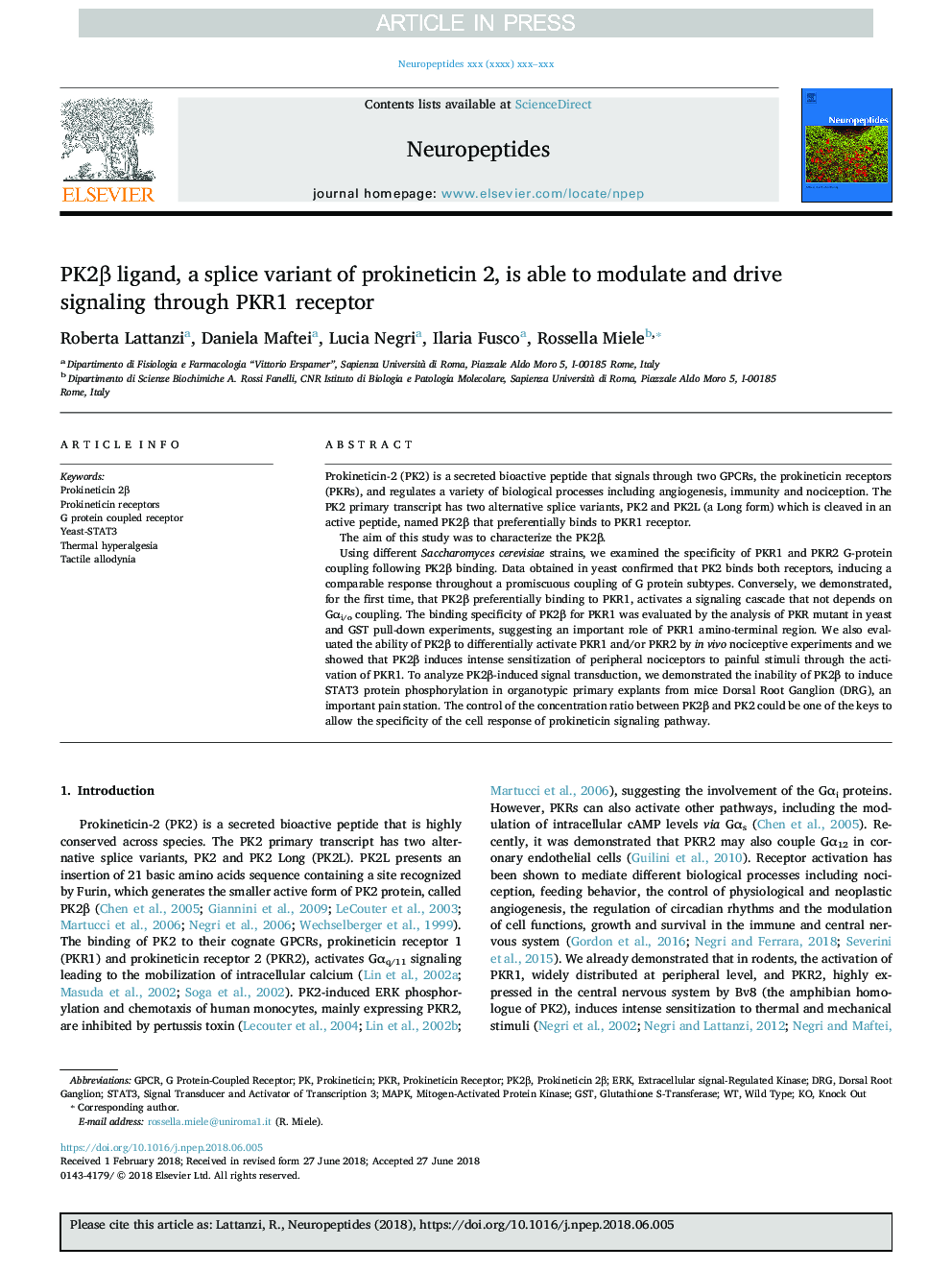| Article ID | Journal | Published Year | Pages | File Type |
|---|---|---|---|---|
| 10212314 | Neuropeptides | 2018 | 11 Pages |
Abstract
Using different Saccharomyces cerevisiae strains, we examined the specificity of PKR1 and PKR2 G-protein coupling following PK2β binding. Data obtained in yeast confirmed that PK2 binds both receptors, inducing a comparable response throughout a promiscuous coupling of G protein subtypes. Conversely, we demonstrated, for the first time, that PK2β preferentially binding to PKR1, activates a signaling cascade that not depends on Gαi/o coupling. The binding specificity of PK2β for PKR1 was evaluated by the analysis of PKR mutant in yeast and GST pull-down experiments, suggesting an important role of PKR1 amino-terminal region. We also evaluated the ability of PK2β to differentially activate PKR1 and/or PKR2 by in vivo nociceptive experiments and we showed that PK2β induces intense sensitization of peripheral nociceptors to painful stimuli through the activation of PKR1. To analyze PK2β-induced signal transduction, we demonstrated the inability of PK2β to induce STAT3 protein phosphorylation in organotypic primary explants from mice Dorsal Root Ganglion (DRG), an important pain station. The control of the concentration ratio between PK2β and PK2 could be one of the keys to allow the specificity of the cell response of prokineticin signaling pathway.
Keywords
DRGProkineticin receptorProkineticin receptorsPKRGPCRERKGSTSTAT3dorsal root ganglionTactile allodyniaG protein coupled receptorMAPKsignal transducer and activator of transcription 3knock outwild typeThermal hyperalgesiamitogen-activated protein kinaseProkineticinextracellular signal-regulated kinaseglutathione S-transferaseG protein-coupled receptor
Related Topics
Life Sciences
Biochemistry, Genetics and Molecular Biology
Endocrinology
Authors
Roberta Lattanzi, Daniela Maftei, Lucia Negri, Ilaria Fusco, Rossella Miele,
